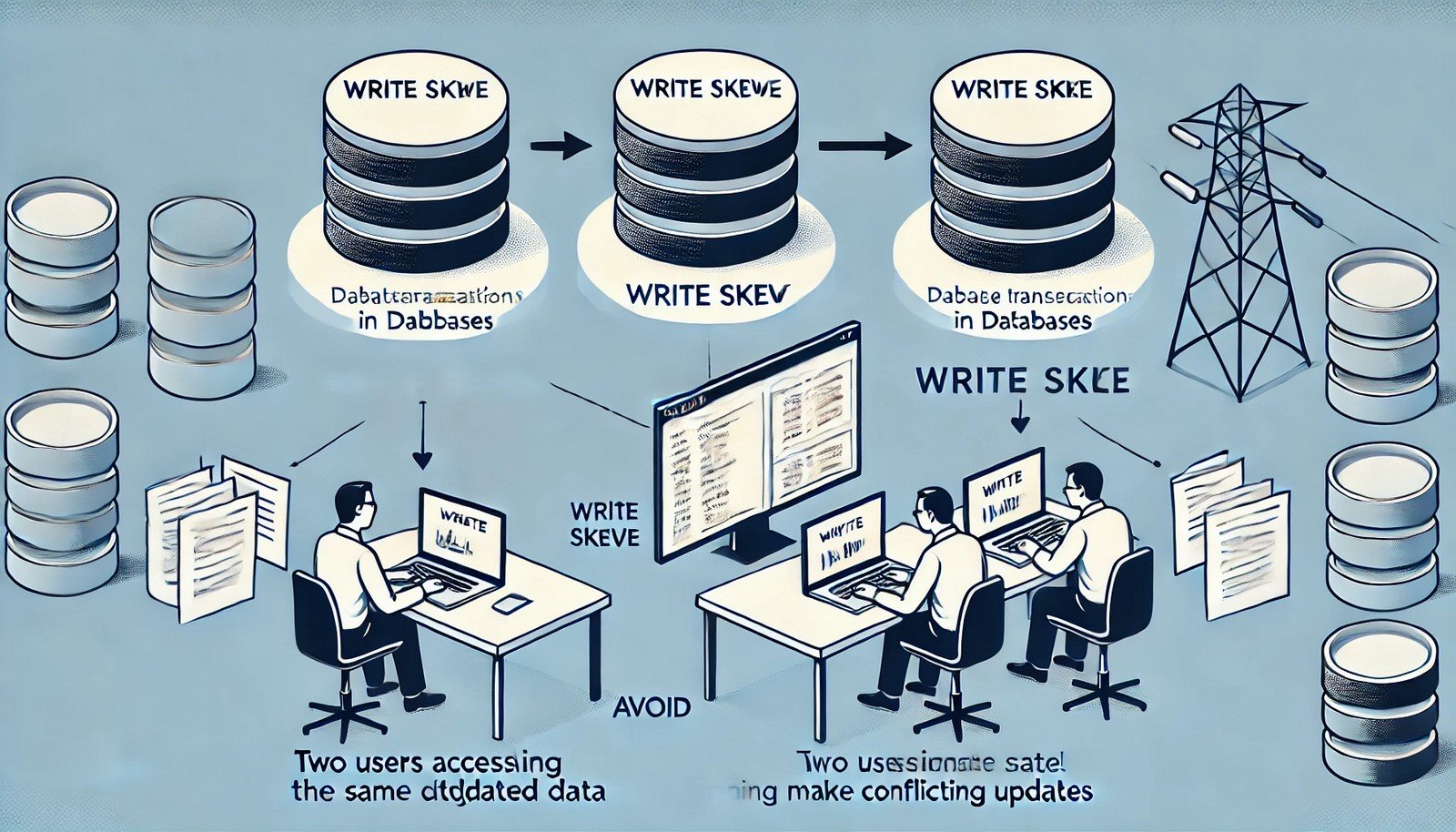Write Skew

(Representational Image | Source: Dall-E)
Quick Navigation:
- Write Skew Definition
- Write Skew Explained Easy
- Write Skew Origin
- Write Skew Etymology
- Write Skew Usage Trends
- Write Skew Usage
- Write Skew Examples in Context
- Write Skew FAQ
- Write Skew Related Words
Write Skew Definition
Write skew is a phenomenon in database management where concurrent transactions that read and update different but related records lead to data inconsistencies. This issue occurs in systems that use multi-version concurrency control (MVCC) or weak isolation levels. When two transactions read each other's uncommitted data and make changes based on outdated information, it results in data anomalies.
Write Skew Explained Easy
Imagine two friends want to order the last two slices of pizza. They both check the fridge, see two slices left, and decide to take one each. But they don’t realize the other person has done the same thing. When they both go to grab a slice, one of them ends up with nothing. That’s write skew—it happens when two people make decisions based on outdated or incomplete information.
Write Skew Origin
Write skew as a concept emerged from studies in database concurrency and transaction isolation. As distributed databases and concurrent transactions became more common, researchers identified cases where standard isolation mechanisms failed to prevent inconsistencies, leading to the formalization of write skew.
Write Skew Etymology
The term “write skew” comes from the idea that multiple concurrent writes can cause an imbalance (or skew) in data consistency. It highlights how uncoordinated write operations can lead to unexpected system behavior.
Write Skew Usage Trends
With the rise of distributed databases, cloud computing, and NoSQL systems, write skew has become a critical concern in database design. Modern database architectures, particularly those relying on weak consistency models, must account for write skew to maintain correctness. Developers use techniques like stricter isolation levels, conflict resolution, and transactional locking to mitigate its effects.
Write Skew Usage
- Formal/Technical Tagging:
- Database Management
- Concurrency Control
- Transaction Isolation - Typical Collocations:
- "write skew anomaly"
- "concurrent transaction conflict"
- "weak isolation level issue"
- "multi-version concurrency control problem"
Write Skew Examples in Context
- In a hospital database, two doctors check a patient’s medication record at the same time, both see the same dose available, and each prescribes a new dose. The patient ends up with double the intended amount.
- A banking system processes two simultaneous withdrawals from a joint account, both assuming the money is available. This leads to an overdraft when neither transaction reflects the other’s withdrawal.
- In cloud-based collaboration tools, two users edit different sections of the same document, but due to weak consistency, one user’s changes overwrite the other’s unexpectedly.
Write Skew FAQ
- What is write skew in databases?
Write skew occurs when concurrent transactions read outdated data and make conflicting updates, leading to data inconsistencies. - How does write skew differ from lost updates?
Lost updates happen when one transaction overwrites another's changes. Write skew, however, results from multiple transactions making independent updates based on outdated reads. - What databases are most affected by write skew?
Distributed and NoSQL databases, as well as systems using multi-version concurrency control (MVCC) and weak isolation levels, are more prone to write skew. - Can write skew be prevented?
Yes, by using stronger isolation levels like serializable transactions, implementing locks, or using conflict resolution strategies. - What is an example of write skew in real life?
A shared calendar system where two employees book the same meeting room simultaneously because they both saw it as available, leading to a scheduling conflict. - Does ACID compliance eliminate write skew?
Not necessarily. ACID compliance helps maintain data integrity, but weaker isolation levels in ACID databases can still allow write skew. - How does multi-version concurrency control (MVCC) contribute to write skew?
MVCC allows transactions to read old versions of data without blocking writes, which can result in transactions making changes based on outdated information. - What are the consequences of write skew in financial systems?
Write skew can cause issues like double spending, overdrafts, and incorrect balances due to conflicting transactions. - How do developers detect write skew?
By analyzing transaction logs, using testing frameworks, or running simulations under concurrent workloads to observe unexpected data inconsistencies. - Are there tools to prevent write skew?
Yes, some databases offer serializable isolation levels, and frameworks like OCC (Optimistic Concurrency Control) help mitigate write skew.
Write Skew Related Words
- Categories/Topics:
- Database Transactions
- Concurrency Control
- Data Consistency
Did you know?
The concept of write skew played a significant role in the development of modern database consistency models. It was one of the reasons Google Spanner introduced TrueTime to synchronize transactions across distributed systems with nanosecond precision, reducing data inconsistencies caused by skewed writes.
PicDictionary.com is an online dictionary in pictures. If you have questions or suggestions, please reach out to us on WhatsApp or Twitter.Authors | Arjun Vishnu | @ArjunAndVishnu

I am Vishnu. I like AI, Linux, Single Board Computers, and Cloud Computing. I create the web & video content, and I also write for popular websites.
My younger brother, Arjun handles image & video editing. Together, we run a YouTube Channel that's focused on reviewing gadgets and explaining technology.



Comments powered by CComment